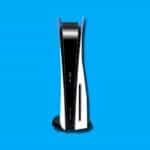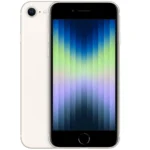Lyocell, a textile fiber that is known by the brand name Tencel, is gaining popularity in the fashion world for being a sustainable choice. Just like some people refer to all photocopies as Xerox, many might not know lyocell by name but could recognize the Tencel brand. The excitement surrounding lyocell is due to its environmentally friendly production process.
Lyocell
| Category | Description |
|---|---|
| Type | Regenerated cellulosic fiber |
| Source | Sustainably harvested wood pulp (usually eucalyptus) |
| Production Process | Wood pulp is dissolved in a non-toxic solvent, spun into fibers, and washed |
| Properties | * Soft and smooth hand feel * Breathable and absorbent * Wrinkle-resistant * Drapes well * Strong when wet or dry |
| Environmental Impact | * Considered more sustainable than traditional rayon due to closed-loop production process * Requires less water and land use than cotton cultivation * Biodegradable | |
| Uses | * Clothing (casual wear, activewear, dresses, blouses) * Bedding (sheets, comforters) * Towels and other textiles |

Additional Notes
- Lyocell is sometimes marketed under brand names such as Tencel® by Lenzing AG.
- It can often be more expensive than cotton or traditional rayon.
The making of lyocell stands out because it doesn’t harm the environment. The process uses nontoxic solvents and recycles about 99.5% of them, leading to minimal waste. This fiber is not only strong and durable but also soft, making it ideal for various uses from clothing to home textiles. Lyocell’s sustainability and versatility are why it’s becoming a popular choice in the fashion and textile industry.
Key Takeaways
- Lyocell is an eco-friendly textile fiber known for its softness, durability, and strength, making it a sustainable choice for the fashion and textile industry.
- The production of lyocell is environmentally friendly, utilizing a closed-loop system that recycles about 99.5% of the non-toxic solvents used, resulting in minimal waste.
- Lyocell’s versatility allows it to be used in a range of applications, from casual and activewear to luxury fashion items and home textiles, due to its ability to wick moisture, provide comfort, and retain vibrant colors.
- Its popularity in the industry is growing as both consumers and businesses seek sustainable materials that do not compromise on quality or comfort, highlighting a shift towards more responsible fashion practices.
- Choosing lyocell contributes to saving money in the long term as products made from this fiber are more durable and maintain their quality over time, thereby reducing the need for frequent replacements.
What is Lyocell?
Lyocell, also known by the brand name Tencel, is a fiber that’s making waves in the fashion industry for being eco-friendly. It’s created from wood pulp, which might sound odd, but it’s true. Trees like eucalyptus, oak, and birch are used in its production. What sets lyocell apart is its manufacturing process, which is kinder to the planet than many other fibers.
The production of lyocell doesn’t involve harmful chemicals. This is a big deal because it means the process is safer for the people making the fabric and for the environment. Most of the solvent used to turn wood into soft fibers is recycled, which cuts down on waste. This recycling happens in what’s called a closed-loop system, where about 99.5% of the materials get reused.
Lyocell is not just good for the Earth; It’s also strong and durable. Even when it’s wet, it doesn’t easily break down. This strength doesn’t mean it’s rough, though. Lyocell feels super soft to the touch, making it a great choice for everything from luxury sheets to everyday clothes.
The softness and strength of lyocell mean products last a long time. This makes items like lyocell dress shirts or bed linens a smart buy. They keep their quality over years of use, as long as they’re taken care of properly. So, choosing lyocell can mean saving money in the long run because you won’t have to replace things as often.
Lyocell stands out for its eco-friendly production, strength, and softness. These qualities are why it’s becoming increasingly popular for clothing and home textiles. With more awareness about its benefits, lyocell’s role in sustainable fashion continues to grow.
The Sustainable Production Process of Lyocell
Lyocell is changing the game in fabric production with its eco-friendly approach. This material comes from wood pulp, sourced from trees like eucalyptus and birch. What sets it apart is its production process. Unlike other fabrics, lyocell uses a special method that’s not only good for the planet but also creates a top-notch product.
At the heart of lyocell’s production is a closed-loop system. This system is a big deal because it recycles about 99.5% of the solvents used. These chemicals are captured and reused, drastically reducing waste. This is a stark contrast to traditional methods where waste can be a major issue.
Another key factor is the use of non-toxic chemicals. This choice matters for the environment and for the people working in production. It ensures the process is safer and less harmful. Plus, it means the final product, the lyocell fabric, is safe and gentle for people to use.
But it’s not just about being green. Lyocell also delivers on quality. The process used preserves the strength of the wood pulp, resulting in a fabric that’s both durable and soft. This means lyocell items can last longer, offering a blend of luxury and longevity. It’s strong, even when wet, making it a dependable choice for many uses.
Besides its strength, lyocell stands out for its feel. It’s incredibly soft, often compared to silk or high-quality cotton. This makes it a favorite for clothing and bedding. Its versatility is also noteworthy. Lyocell can be easily dyed and blended with other fibers, opening the door to a wide array of products.
The production of lyocell represents a significant step forward in sustainable manufacturing. Its efficient use of materials and chemicals not only safeguards the environment but also provides consumers with a fabric that’s kind to the skin and lasts. With these benefits, it’s easy to see why lyocell is becoming a popular choice for those looking for eco-friendly options.
Properties of Lyocell Fiber
Lyocell fiber stands out in the textile industry for its impressive features. It’s known for being soft, durable, and eco-friendly. Let’s break down these properties to understand why lyocell is a smart choice for fabrics.
First off, lyocell is incredibly soft. People often compare its feel to that of silk. This softness comes from its fine fibers, which are flexible and smooth. This makes lyocell fabrics feel luxurious and gentle against the skin. They’re a great pick for anyone, especially those with sensitive skin.
Another standout property of lyocell is its strength. Despite its silky feel, lyocell is robust and resistant to damage. This means clothes and textiles made from lyocell last longer. If you take good care of them, you won’t have to replace them as often.
Lyocell is also breathes well, thanks to its moisture-wicking abilities. It can pull sweat away from the body, keeping you cool and comfortable. This makes it ideal for a variety of climates and especially good for sportswear.
Lastly, lyocell’s production process is greener than that of many other fibers. It uses less water and non-toxic chemicals. Almost all the solvents get recycled. This makes it a better choice for the planet.
In short, lyocell fiber’s blend of softness, durability, breathability, and eco-friendliness make it a standout material in the world of textiles. It offers a combination of qualities that are hard to beat, making it a favored choice for a wide range of applications.
Applications of Lyocell in Fashion and Textiles
Lyocell, a material renowned for its green attributes, is carving a niche in the fashion and textile industry. This fiber stands out not just for its eco-friendly production process but also for its versatility across various applications. From casual wear to high-end fashion, lyocell is making its mark.
In casual clothing, lyocell offers a soft, breathable option for everyday apparel. Its ability to wick moisture makes it an ideal choice for active wear. The fiber’s durability ensures that garments last longer, providing a sustainable choice for consumers looking to reduce their environmental footprint.
The realm of activewear has also seen a surge in the use of lyocell. Its natural breathability and moisture management properties keep wearers comfortable during intense physical activities. Moreover, its smooth surface reduces friction, preventing skin irritation during workouts.
In high-end fashion, designers value lyocell for its luxurious feel. It drapes beautifully, mimicking silk, and holds dye well, allowing for vibrant, long-lasting colors. These qualities make it a favored material for creating statement pieces that combine sustainability with style.
Furthermore, lyocell’s applications extend beyond clothing. Its strength and softness make it an excellent choice for bedding and towels. Consumers can enjoy the same comfort and eco-friendly benefits in their homes.
The fashion and textile industry’s embrace of lyocell highlights a shift towards more sustainable practices. Its diverse applications underscore its potential to transform the sector, offering a responsible yet stylish alternative to traditional materials.
The Growing Popularity of Lyocell in the Industry
Lyocell is becoming a big deal in the fashion and textile world. People like it because it’s strong, soft, and eco-friendly. This fiber is made in a way that’s kinder to the environment than many other materials. It doesn’t use harmful chemicals and uses less water and energy. Because of this, more designers and brands are choosing lyocell for their products.
Lyocell’s features stand out, especially its ability to manage moisture. This means clothes made from it can help keep you dry and comfortable. It feels luxurious, similar to silk, but it’s tough and lasts a long time. This mix of comfort and durability makes it perfect for everyday clothes, activewear, and even fancy outfits.
Another reason for its rising fame is its color richness. Lyocell holds dyes well, making colors more vibrant and longer-lasting. This quality is a big plus for fashion designers who want their creations to pop and stay beautiful over time.
It’s not just for clothes, either. Lyocell is also great for home items like towels and bed sheets. Its softness adds an extra touch of comfort to these products. Plus, it’s still strong and easy to take care of, which makes it a practical choice for everyday use.
Businesses are paying attention to what customers want: more sustainable options. They see that people are choosing products that are better for the planet. Lyocell fits this demand perfectly. Its production process and product life cycle are more sustainable than many alternatives.
As the industry looks for materials that meet both style and environmental needs, lyocell stands out. It’s proving to be a material that doesn’t just follow trends but sets them, thanks to its blend of luxury, practicality, and responsibility. This shift towards lyocell shows a promising move towards a more sustainable fashion future, where what we wear not only looks good but does good too.
Conclusion
Lyocell’s rise in the fashion and textile industry marks a significant stride towards sustainability without compromising on quality or style. Its unique properties, including moisture management, silk-like feel, and vibrant color retention, make it an ideal choice for a wide range of applications. From everyday wear to luxurious home items, lyocell is setting a new standard for eco-friendly materials. As the industry continues to evolve, the embrace of lyocell by designers and brands underscores a collective move towards a greener, more responsible fashion future. This trend not only reflects a growing consumer demand for sustainable products but also highlights the industry’s ability to innovate and adapt for the betterment of the planet.
Frequently Asked Questions
What are the disadvantages of Tencel?
Tencel, known for its eco-friendly production, does come with a few disadvantages. It tends to be more expensive than many other fabrics due to the sophisticated technology and significant chemical usage involved in its manufacturing process.
What fabric is similar to lyocell?
Lyocell shares similarities with viscose and modal, to the extent that they are often collectively referred to under the term “viscose.” These semi-synthetic fabrics are man-made from natural materials, distinguishing them from fully synthetic alternatives.
Is lyocell natural or synthetic?
Lyocell is categorized as a semi-synthetic fabric. It serves as a preferable alternative to cotton or silk, predominantly made from cellulose derived from wood. This positions it between natural and synthetic fabrics in terms of composition.
Does lyocell get smelly?
Lyocell is notable for its efficient water usage and breathability, traits that contribute to its resistance to odor. Its ability to stave off smells means it requires less frequent washing, aligning with eco-friendly practices by conserving water.
Can you machine wash lyocell?
Lyocell garments are best cared for through hand washing at low temperatures to prevent shrinkage. Nonetheless, if pressed for time, some lyocell items can be machine washed on a delicate cycle. It’s imperative to consult the care labels prior to laundering.







